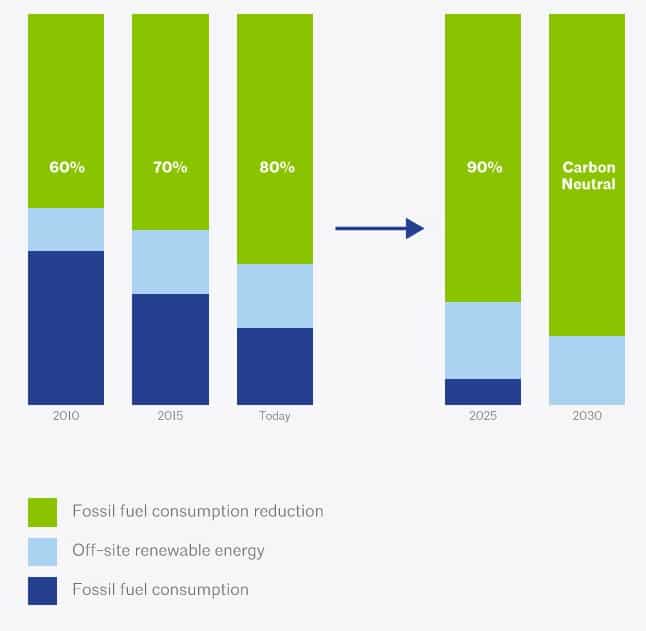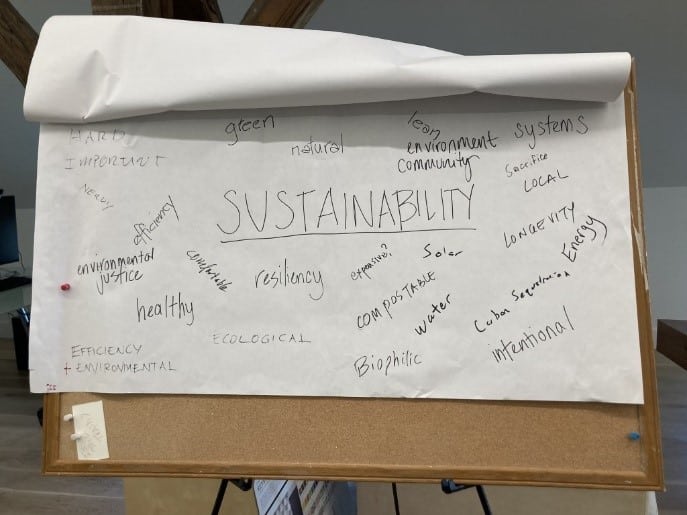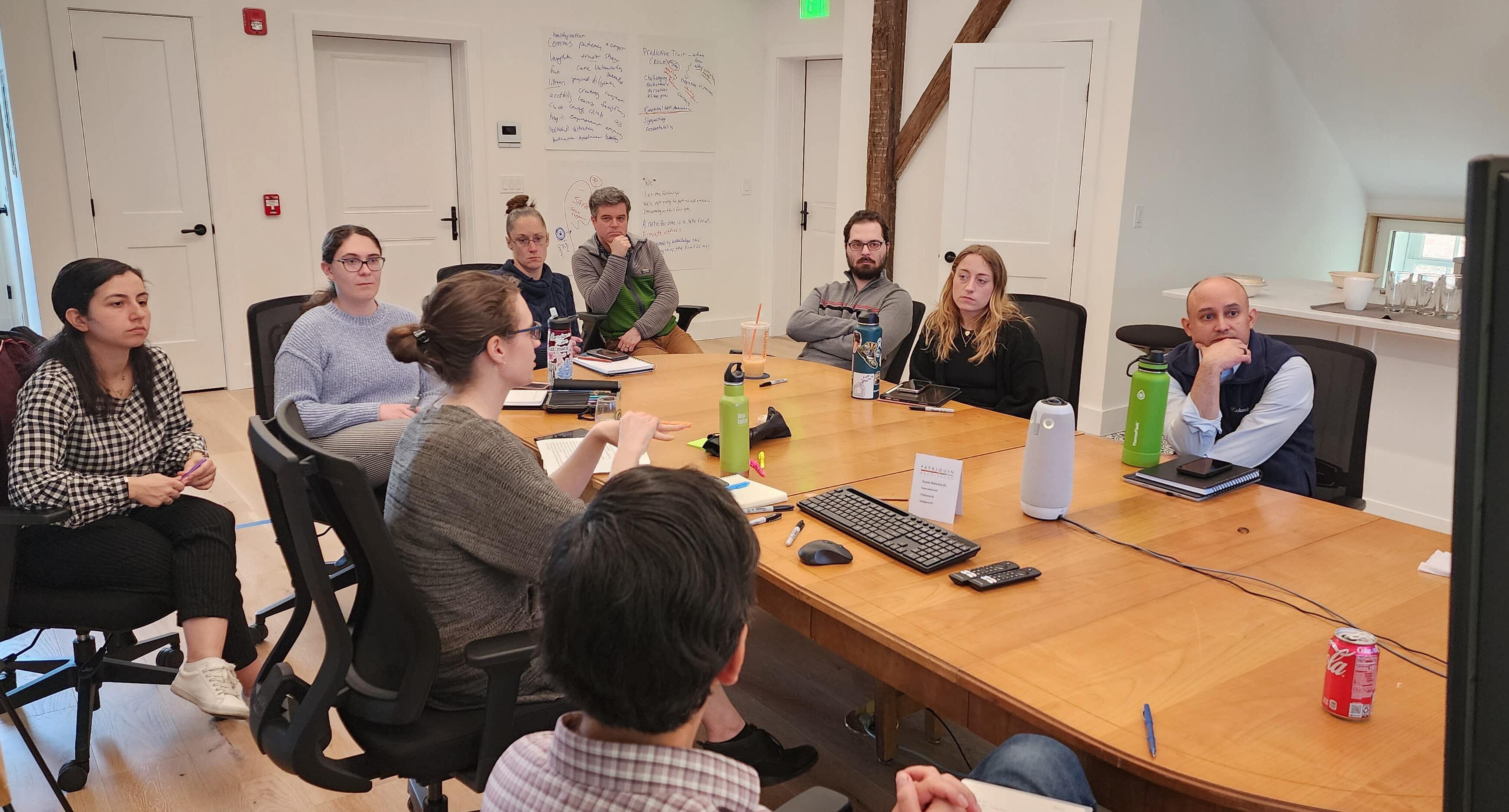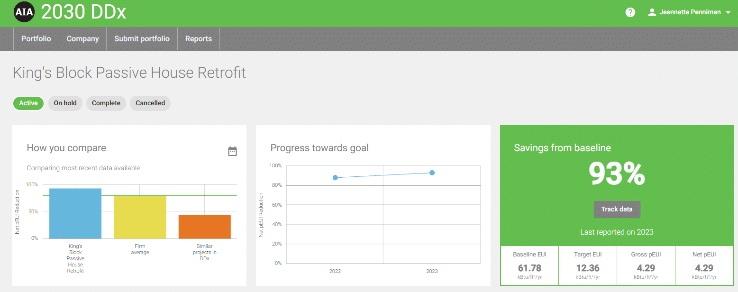The built environment is responsible for approximately 40% of the world’s carbon emissions. That’s a sobering statistic—especially for those of us in the AEC (architecture, engineering, and construction) community.

Progress chart of 2030 Commitment’s fossil fuel consumption reduction. Provided by AIA’s 2030 Commitment Welcome Kit.
Needless to say, we can’t simply halt all design and construction activities. But we certainly aren’t powerless when it comes to the climate crisis. In fact, by taking the right actions, we can be powerful enablers of positive change. That’s why our firm has joined the 2030 Commitment, a program created by the American Institute of Architects (AIA).
We’re excited to be one of more than 1,200 architecture firms that have committed to reaching carbon neutrality by 2030. Together, we’re striving for that goal through sustainable and regenerative design methods and spreading information and awareness about sustainable design practices.
By signing onto the 2030 Commitment, we’ve agreed to actively monitor and log our projects’ energy use and carbon footprints. That includes submitting project information to the 2030 Design Data Exchange (DDx). It’s an online database that enables energy use and performance comparisons based on a project’s EUI (energy use intensity, measured as kBtu per square foot per year). It also allows us to compare the performance of our projects anonymously to those of other architecture firms.
Charting Our Course With a 2030 Commitment Charette
 To get our participation in the 2030 Commitment under way, we held an office-wide “sustainability charette” or brainstorming session. We began by asking ourselves what comes to mind when we think about sustainability.
To get our participation in the 2030 Commitment under way, we held an office-wide “sustainability charette” or brainstorming session. We began by asking ourselves what comes to mind when we think about sustainability.
We found that question more difficult to answer than we might have thought, partly because our awareness of and considerations for sustainable practices evolve over time. Still, it was an important one to ask, as it provided an opportunity for all team members to consider the many components of sustainability and how we will take action toward our 2030 Commitment.
Patriquin’s Sustainable Action Committee
Another benefit of our charette was the creation of a Sustainable Action Committee (SAC). These volunteers have taken on the task of developing and administering our Sustainability Action Plan (SAP)—the guidelines for our approach to sustainable design that we’ll be sharing with the DDx.
Developing our SAP has involved multiple iterations, but it’s been a rewarding and highly collaborative process. The first version of our plan includes three primary sectors:
1. Internal Practices & Operations
-
- Building Operations
- Consumables & Procurement
- Internal Education
2. Projects
-
- Design Process
- Data Tracking & Reporting
- Collaborator Education & Engagement
3. Community Outreach
Like our practices for developing sustainable designs, the SAP will surely grow and evolve.
Putting Our Sustainability Action Plan Into Practice
Designing buildings that meet client needs while achieving sustainability goals requires careful consideration at all stages of the process. Going forward, our engagements will start with a Sustainability Charette involving building owners, end users, and essential consultants. It will include an Owner Sustainability Questionnaire designed to gather details on the owner’s goals for the project, share information on sustainability strategies and certification programs, and establish a common vocabulary for discussing sustainability measures.
Energy modeling using tools like WUFI and cove.tool has been and will remain an essential step in our design process. And we practice what we preach. These tools guided us in developing our own Passive House Certified office space.
Through exploration of different building systems and orientations, energy modeling allows us to establish a 2030 Commitment baseline and target EUI for each project. In each project phase, we’ll report our predicted EUI to the DDx, the owner, and Patriquin’s SAC to record, track, and continually improve how we pursue our energy-use goals.
Our Unique Approach to AIA’s 2030 Commitment
Our firm has focused on sustainability in design for many years, including in the renovation of our office space, our new construction projects and the many historic preservation projects we’ve completed. But the 2030 Commitment has motivated us to achieve even higher standards.
Collaborating on our Sustainability Action Plan and new processes has been an enjoyable and rewarding experience for everyone at Patriquin Architects, and we’re eagerly leveraging that work and our passion for sustainability in every new project we undertake.
Get to Know an Architectural Design Firm Committed to Sustainability
Our team provides expert services on a wide variety of engagements. If you have a project in mind or simply want to know more about our firm for future reference, we’d love to hear from you!




